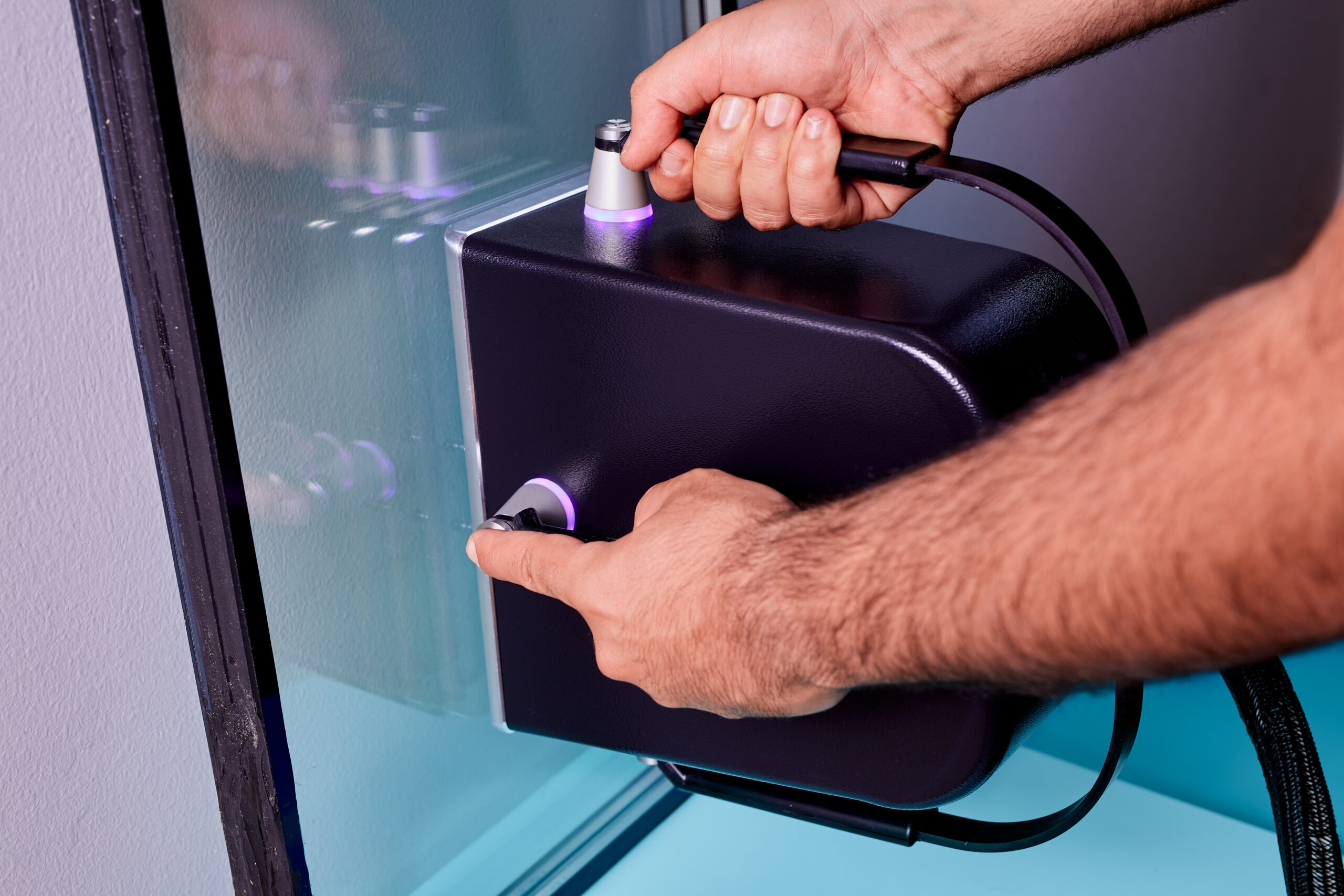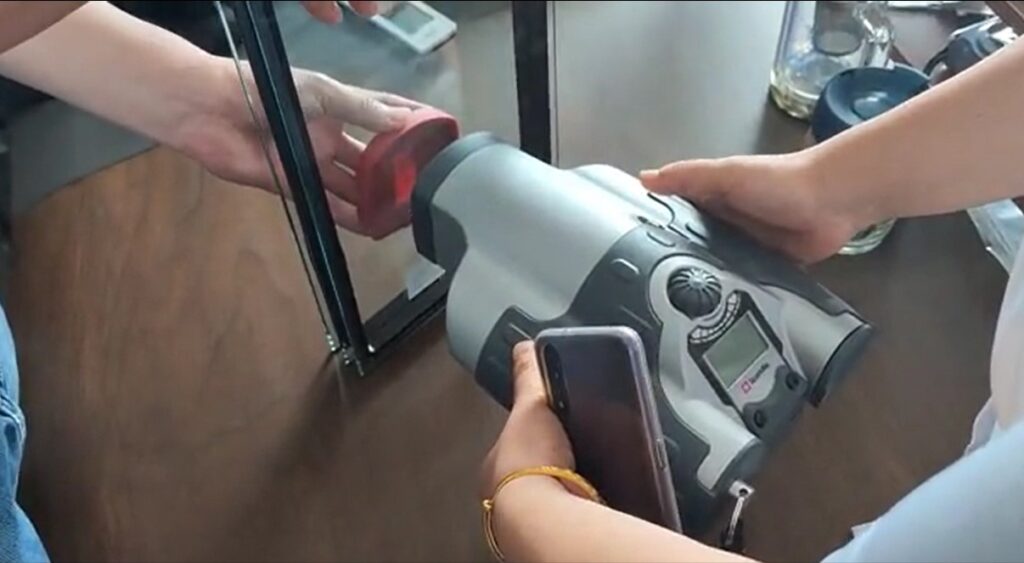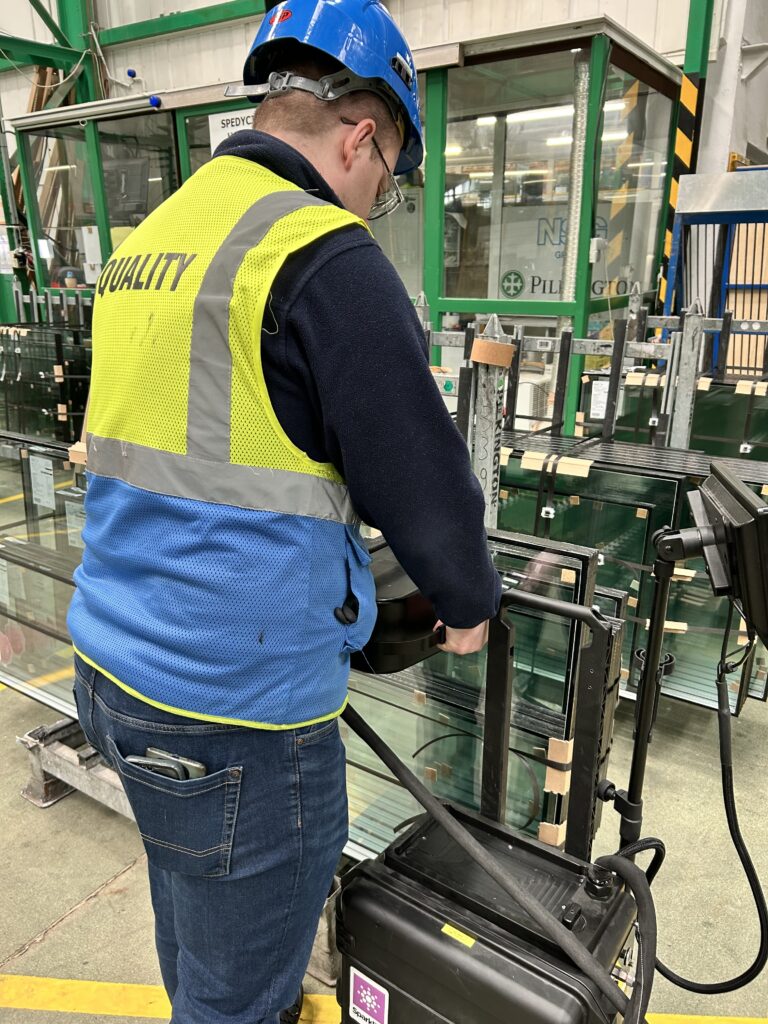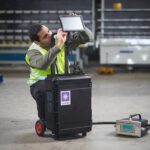Ensuring the quality and performance of double-glazing units (IGUs) is a critical responsibility for glass manufacturers. While aesthetic and structural aspects often take center stage, the invisible yet essential role of gas levels within sealed units must not be underestimated. Measuring and maintaining proper gas fill rates is fundamental to delivering reliable and high-performance insulating glass units (IGUs) that meet both industry standards and customer expectations.
The Critical Role of Gas in Double Glazing Units
Inert gases like argon, krypton, and xenon are essential to the thermal efficiency of IGUs. Their low thermal conductivity helps minimize heat transfer, significantly enhancing insulation and reducing energy costs for end-users. Studies have shown that:
- Argon-filled IGUs improve thermal insulation by up to 20% compared to air-filled units.
- Krypton, while more expensive, offers a further improvement in units with narrow spacers.
These gases also reduce condensation risks, ensuring a clearer, more aesthetically pleasing unit for years.

Case Study: Ensuring Gas Fill in Production
Company Profile: Szkłoland LLC is a European manufacturer of building, decorative and furniture glass.
Challenge: They have not been able to verify if their gas press for insulated glass work properly.
Solution: They invested in non-invasive gas measurement device, Sparklike Laser Portable for end-of-line testing and implemented to the existing processes successfully.
Result:
- Able to proof their IGUs are filled with gas and the exact gas fill rate.
- 100 % sure their gas press in the insulated glass process line functions.
- Provide the market with better-quality products – Customer are more satisfied.
Read the customer story here.
Consequences of Insufficient Gas Levels
Poor gas fill rates can lead to:
- Reduced Insulating Performance: A loss of just 10% argon reduces thermal insulation by approximately 5%.
- Higher Energy Costs for End-Users: Studies have shown that insufficient gas fill can increase heating and cooling bills by 10-15%.
- Customer Dissatisfaction: Improper gas fill can be responsible for a significant portion of customer complaints, directly impacting reputation.
The Role of Technology in Quality Control
Advanced tools such as Tunable Diode Laser Absorption Spectroscopy (TDLAS) are reshaping quality control for gas measurement. For example, the Sparklike Laser Portable is a non-invasive gas analyzer capable of accurately measuring argon and krypton concentrations, even in triple-glazed units. Testing conducted by ift Rosenheim demonstrated that Sparklike Laser achieved measurement accuracy within ±2% when compared to gas chromatography.
Building Trust Through Quality
For manufacturers, ensuring optimal gas levels in double glazing units is not just about meeting regulatory standards. It is a commitment to delivering reliable, energy-efficient solutions that satisfy end-users and build long-term brand loyalty. Incorporating advanced gas measurement tools into your production process ensures your IGUs remain compliant, competitive, and credible.
Conclusion
The science of gas-filled IGUs is fundamental to the glass industry. Manufacturers who prioritize accurate gas measurement set themselves apart, not only by delivering superior products but also by protecting their reputation and fostering customer trust. With technologies like non-invasive gas analyzers and robust quality control protocols, the future of double glazing remains firmly in your hands.
Contact Sparklike for more information and support on measuring argon concentration in IGUs.
For further reading and detailed studies, refer to the following sources:
- https://www.rdh.com/wp-content/uploads/2017/07/TB1-Argon-Gas-Fill-IGUs.pdf
- https://www.glass.org/sites/default/files/2022-07/FB49-17_2022_Performance_Improvements_IGUs.pdf
- https://www.windowanddoor.com/article/gas-fill-101-gas-fill-options-igus
- https://dora.dmu.ac.uk/server/api/core/bitstreams/915ff6f1-8943-4204-9043-0df868cb7406/content
- https://www.facadetectonics.org/papers/insulating-glass-unit-gas-loss
- https://www.nrel.gov/docs/fy23osti/84852.pdf





